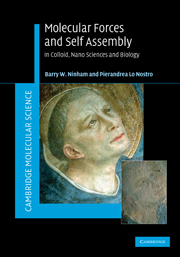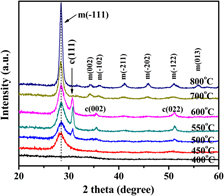Refine search
Actions for selected content:
106095 results in Materials Science
JMR volume 26 issue 1 Cover and Front matter
-
- Journal:
- Journal of Materials Research / Volume 26 / Issue 1 / 14 January 2011
- Published online by Cambridge University Press:
- 14 January 2011, pp. f1-f4
- Print publication:
- 14 January 2011
-
- Article
-
- You have access
- Export citation
Thermoelectric power factor enhancement of textured ferroelectric SrxBa1–x Nb2O6–δ ceramics
-
- Journal:
- Journal of Materials Research / Volume 26 / Issue 1 / 14 January 2011
- Published online by Cambridge University Press:
- 14 January 2011, pp. 26-30
- Print publication:
- 14 January 2011
-
- Article
- Export citation
Catalytic graphitization of three-dimensional wood-derived porous scaffolds
-
- Journal:
- Journal of Materials Research / Volume 26 / Issue 1 / 14 January 2011
- Published online by Cambridge University Press:
- 14 January 2011, pp. 18-25
- Print publication:
- 14 January 2011
-
- Article
- Export citation
Optical properties and electrochromic response of nanostructured molybdenum trioxide films
-
- Journal:
- Journal of Materials Research / Volume 26 / Issue 1 / 14 January 2011
- Published online by Cambridge University Press:
- 14 January 2011, pp. 55-61
- Print publication:
- 14 January 2011
-
- Article
- Export citation
JMR volume 27 issue 1 Cover and Front matter
-
- Journal:
- Journal of Materials Research / Volume 27 / Issue 1 / 14 January 2012
- Published online by Cambridge University Press:
- 05 January 2012, pp. f1-f7
- Print publication:
- 14 January 2012
-
- Article
-
- You have access
- Export citation
The influence of mixed phases on optical properties of HfO2 thin films prepared by thermal oxidation
-
- Journal:
- Journal of Materials Research / Volume 26 / Issue 1 / 14 January 2011
- Published online by Cambridge University Press:
- 14 January 2011, pp. 50-54
- Print publication:
- 14 January 2011
-
- Article
- Export citation
Phase transformation of poly (vinylidene difluoride) in energy harvesting
-
- Journal:
- Journal of Materials Research / Volume 26 / Issue 1 / 14 January 2011
- Published online by Cambridge University Press:
- 12 January 2011, pp. 1-8
- Print publication:
- 14 January 2011
-
- Article
- Export citation
Improved electrical and dielectric properties of La-doped Co ferrite
-
- Journal:
- Journal of Materials Research / Volume 26 / Issue 4 / 28 February 2011
- Published online by Cambridge University Press:
- 11 January 2011, pp. 584-591
- Print publication:
- 28 February 2011
-
- Article
- Export citation
Direct synthesis of tin oxide nanotubes on microhotplates using carbon nanotubes as templates
-
- Journal:
- Journal of Materials Research / Volume 26 / Issue 3 / 14 February 2011
- Published online by Cambridge University Press:
- 11 January 2011, pp. 430-436
- Print publication:
- 14 February 2011
-
- Article
- Export citation
Indentation of polydimethylsiloxane submerged in organic solvents
-
- Journal:
- Journal of Materials Research / Volume 26 / Issue 6 / 28 March 2011
- Published online by Cambridge University Press:
- 11 January 2011, pp. 785-795
- Print publication:
- 28 March 2011
-
- Article
- Export citation
Effect of strain rate in severe plastic deformation on microstructure refinement and stored energies
-
- Journal:
- Journal of Materials Research / Volume 26 / Issue 3 / 14 February 2011
- Published online by Cambridge University Press:
- 11 January 2011, pp. 395-406
- Print publication:
- 14 February 2011
-
- Article
- Export citation
Thermogravimetric analysis of the oxidation resistance of ZrB2–SiC and ZrB2–Sic–TaB2–based compositions in the 1500–1900 °C range
-
- Journal:
- Journal of Materials Research / Volume 26 / Issue 1 / 14 January 2011
- Published online by Cambridge University Press:
- 11 January 2011, pp. 96-107
- Print publication:
- 14 January 2011
-
- Article
- Export citation
Effects of stacking fault energy on the thermal stability and mechanical properties of nanostructured Cu–Al alloys during thermal annealing
-
- Journal:
- Journal of Materials Research / Volume 26 / Issue 3 / 14 February 2011
- Published online by Cambridge University Press:
- 11 January 2011, pp. 407-415
- Print publication:
- 14 February 2011
-
- Article
- Export citation

Molecular Forces and Self Assembly
- In Colloid, Nano Sciences and Biology
-
- Published online:
- 06 January 2011
- Print publication:
- 01 April 2010
OPL volume 1335 Author and Subject Indexes
-
- Journal:
- MRS Online Proceedings Library Archive / Volume 1335 / 2011
- Published online by Cambridge University Press:
- 25 October 2011, pp. 125-127
- Print publication:
- 2011
-
- Article
- Export citation
Proton mobility in SiO2 thin films and impact of hydrogen and humidity on the resistive switching effect
-
- Journal:
- MRS Online Proceedings Library Archive / Volume 1330 / 2011
- Published online by Cambridge University Press:
- 29 July 2011, mrss11-1330-j01-02-k03-02
- Print publication:
- 2011
-
- Article
- Export citation
Li motion mechanisms in (Li,Na)3xLa2/3-xTiO3 (x = 0.067 and 0.167) series followed by ND, NMR and Impedance spectroscopy.
-
- Journal:
- MRS Online Proceedings Library Archive / Volume 1313 / 2011
- Published online by Cambridge University Press:
- 04 April 2011, mrsf10-1313-kk09-40
- Print publication:
- 2011
-
- Article
- Export citation
Electrogenerated chemiluminescence from carbon dots
-
- Journal:
- MRS Online Proceedings Library Archive / Volume 1284 / 2011
- Published online by Cambridge University Press:
- 24 March 2011, mrsf10-1284-c10-10
- Print publication:
- 2011
-
- Article
- Export citation
Synergistic effects on band gap-narrowing in titania by doping from first-principles calculations: density functional theory studies
-
- Journal:
- MRS Online Proceedings Library Archive / Volume 1352 / 2011
- Published online by Cambridge University Press:
- 11 July 2011, mrss11-1352-gg03-05
- Print publication:
- 2011
-
- Article
- Export citation
Microstructural characterization of copper metallic deposition by electroplating growth for SIP applications
-
- Journal:
- MRS Online Proceedings Library Archive / Volume 1288 / 2011
- Published online by Cambridge University Press:
- 01 March 2011, mrsf10-1288-g11-33
- Print publication:
- 2011
-
- Article
- Export citation











